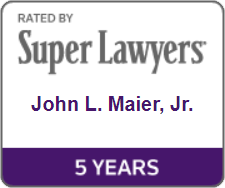Should Your Business Change To S-Corp Status?
If you are the owner [shareholder] of a corporation, at year end, you, your accountant, and your attorney might want to spend some time figuring out if a switch makes sense for your business. Under the current federal income tax rate structure, some owners of incorporated businesses are better off NOT electing Sub S status, but others would benefit. It’s all in the numbers.
What are the main attractions? The shareholders of an S corporation benefit from the same protection from personal liability as do shareholders of a C corporation. So a corporate creditor can’t go after your private assets to satisfy a debt of the corporation. But with an S corporation, taxable income and loss, and tax credits, are passed through to the S corporation shareholders, just like partnerships. Thus, with S status in place, there is no “double taxation” at both the corporate and shareholder levels — like there could be with a regular C corporation.
S corporation shareholders can be employees of the business, draw salaries, and may also receive dividends from the corporation as well as other distributions that are tax-free to the extent of their investment in the corporation. And S corp. stock can be transferred without triggering any adverse tax consequences, as long as the transfer is to a qualifying shareholder (individual and certain types of trusts count as qualifying shareholders).
So – it sounds like switching to S corporation status is a real no-brainer, right? Wrong!
What’s the deal? The answer is that for years, most individual shareholders were taxed at a lower federal rate than the maximum corporate rate. But the current top individual federal income tax rate of 39.6% is almost 5% higher than the top average corporate rate of 35%. Plus, tax reform calls to lower the corporate rate, which would create even more separation, are getting louder. Rep. Paul Ryan, now Speaker of the House, is putting corporate tax reform high on his agenda for 2016. This means that the tax rate differential might not be there to warrant the Sub S status — you have to check your own situation, and that of any fellow shareholders.
Finally, consider these potential drawbacks:
- An S corporation can have only one class of stock (although it may have both voting and nonvoting shares).
- Because amounts distributed to a shareholder can be classified as dividends or salary, the IRS often scrutinizes payments to ensure compensation is reasonable.
- Due to the one-class-of-stock restriction, an S corporation can’t allocate a disproportionate share of tax losses or taxable income to a particular shareholder or group of shareholders.
An S corp. election is made on Form 2553, Election by a Small Business Corporation. The election must be made by the 15th day of the third month of the current tax year. In other words, a calendar-year corporation has until March 15, 2016, to decide whether to make the election for the 2016 tax year, or, conversely, revoke the election if that would be better.




